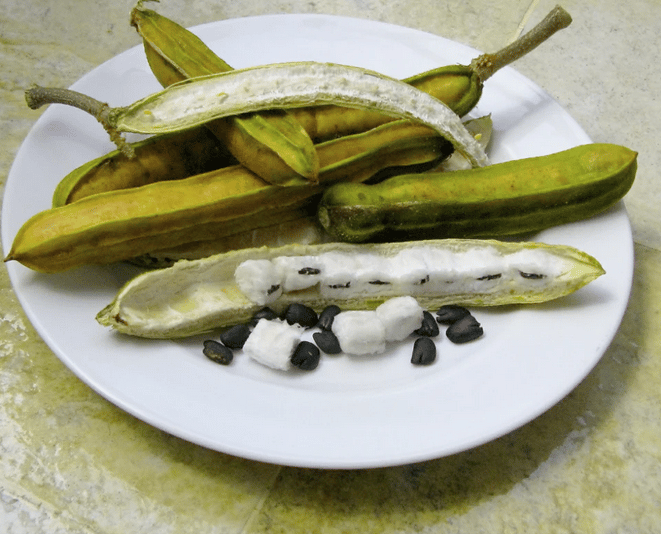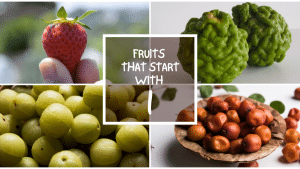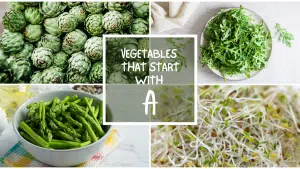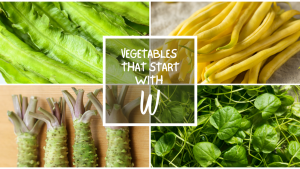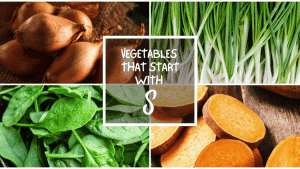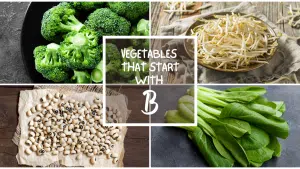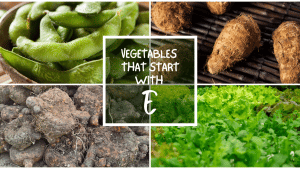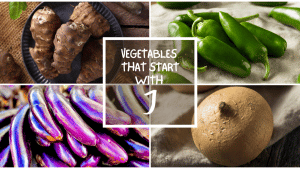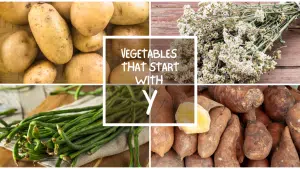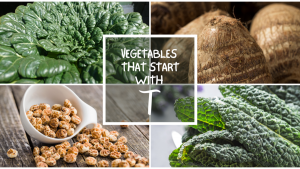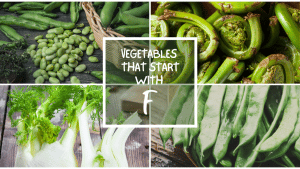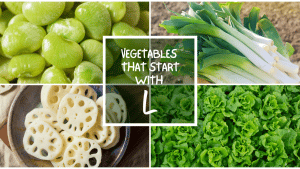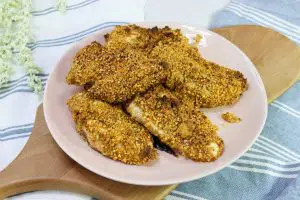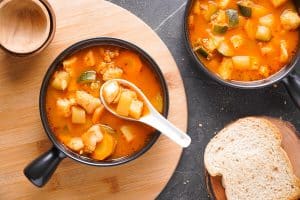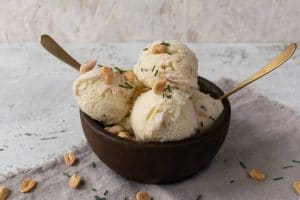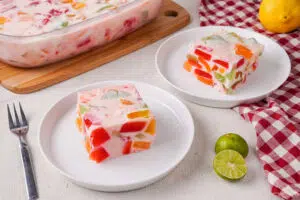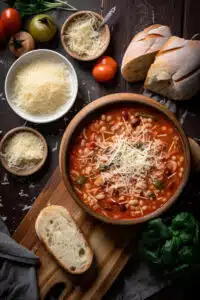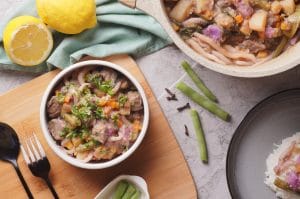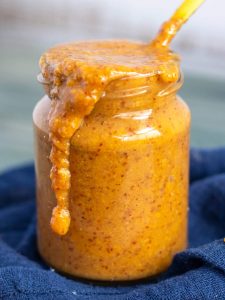All The Vegetables That Start With I
Important Note: When you buy through our links, we may earn a commission. As an Amazon Associate we earn from qualifying purchases. Content, pricing, offers and availability are subject to change at any time - more info.
Although it’s a short list, the vegetables beginning with the letter I are worth checking out. The I veggies run the gamut from crunchy lettuce and onions to saute-worthy side dishes. The selections on this list could actually be taken together to make one outrageously nutritious and delicious meal. However, each of these noteworthy vegetables is amazing in its own right. Whether your diet is plant-based or you’re looking for awesome new side dishes, the vegetables outlined herein are heavenly. Let’s jump in and have a look!
- Iceberg Lettuce
- Ice Cream Bean
- Indian Corn
- Indian Pea
- Italian Red Onion
- Indian Fig Leaves
- The Final Letter
Iceberg Lettuce
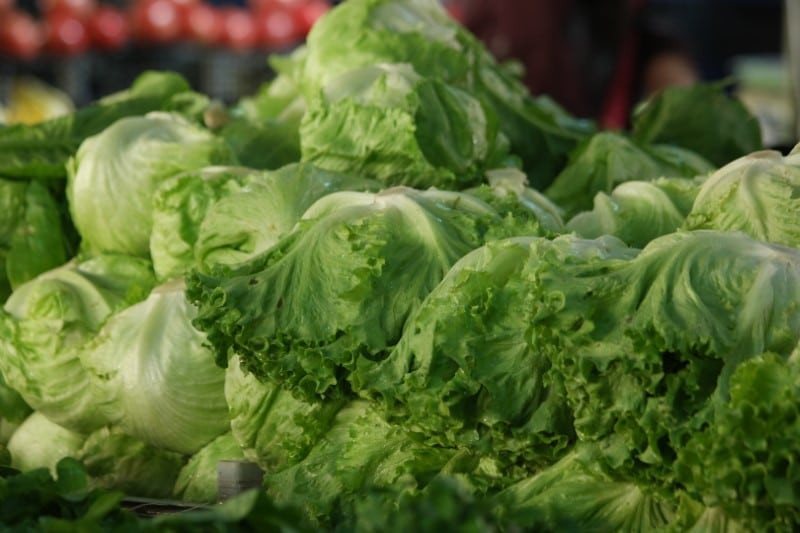
First founded in the late 1800s, this crisphead lettuce is one of the most popular lettuce varieties in the US. Known by the scientific community as Lactuca sativa var. Capitata, iceberg lettuce emerged in the US on the West Coast of California. Easy to purchase all year long, iceberg lettuce can be procured domestically and in nearly all grocery stores. Named for the process by which they’re shipped, on ice, making them look like mini icebergs, this lettuce variety is highly versatile.
Of note, iceberg lettuce is predominantly composed of water; its green leaves have a mild, unremarkable taste, making them a common vehicle for many different recipes. The crunchy leaves of iceberg lettuce make for great wraps, salad blends, slaws, and even soups. It’s not uncommon to fry lettuce leaves or blend them into smoothies too. Iceberg lettuce also adds a great crunch to sandwiches and burgers. Let’s not forget about iceberg’s most famous recipe: the wedge salad. The wedge is just what it sounds like: a quarter of a head of supremely crunchy iceberg lettuce, topped with crispy bacon, blue cheese crumbles, and drenched in creamy blue cheese dressing. Sadly, though iceberg lettuce gets a bad rep for lacking the nutrient density other lettuce varieties contain, it’s actually low in calories and high in vitamins A and C.
Ice Cream Bean
Native to the tropical climes of Mexico, Puerto Rico, and the Amazon, ice cream beans grow in pods near rivers. Technically known as the Inga edulis, the ice cream bean is a member of the legume family. Although extremely rare in the US, ice cream beans can occasionally be found in parts of southern Florida. However, as with most exotic produce, ice cream beans can be shipped into the states.
Each bean pod of the ice cream bean contains a few small beans that look like bite-sized cream puffs. They are small in size and fuzzy in texture; they can be sucked out of their pods and eaten whole. Ice cream beans are named as such because of the pulp’s sweet and silky texture. The bean’s taste is akin to vanilla ice cream with occasional notes of cinnamon. Besides consuming them whole, the pulp of ice cream beans is often squeezed out and blended into smoothies. These incredibly delicious beans are also highly nutritious. High in calcium and phosphorus as well as fiber and vitamin C, ice cream beans are said to be good for digestion, immunity, decreasing inflammation, and strengthening bones.
Indian Corn
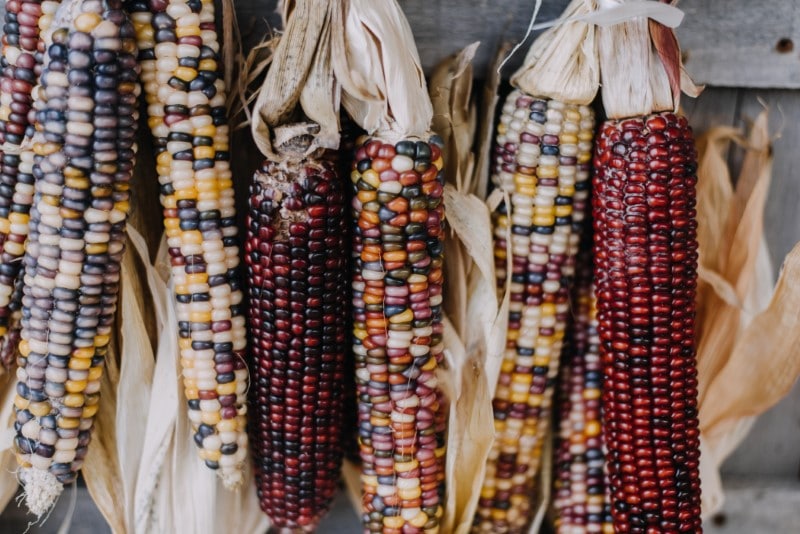
Native to the US, Indian corn was first discovered by Native Americans. Indian corn goes by the scientific moniker Zea mays, but is also colloquially known as flint corn too. Although it’s most commonly found in North America where it’s harvested in the late summer and early fall months, Indian corn also grows in China, India, and parts of South America. When in season, Indian corn is easy to acquire domestically; it can be found in grocery stores, farmers’ markets, and beyond.
Indian corn is similar in size and shape to standard yellow corn, however, it varies in color. Indian corn kernels can be red, blue, and black. The kernels of a single ear of Indian corn may be all one color but often each ear features an array of these colorful shades. The texture of Indian corn kernels is much firmer than standard yellow corn varieties. Like yellow corn, Indian corn is edible and can be prepared in many of the same ways as its standard counterpart. It’s not uncommon to saute, grill, or pop Indian corn. This corn variety is also commonly ground into a colorful flour. Other popular Indian corn dishes included corn salad, street corn, polenta, and creamy soups. Besides eating Indian corn, it’s popular in the states to decorate with these colorful, autumnal stalks in the fall. If you are eating Indian corn, know that it’s fraught with worthwhile nutrients; they’re packed with vitamins, minerals, proteins, and amino acids.
Indian Pea
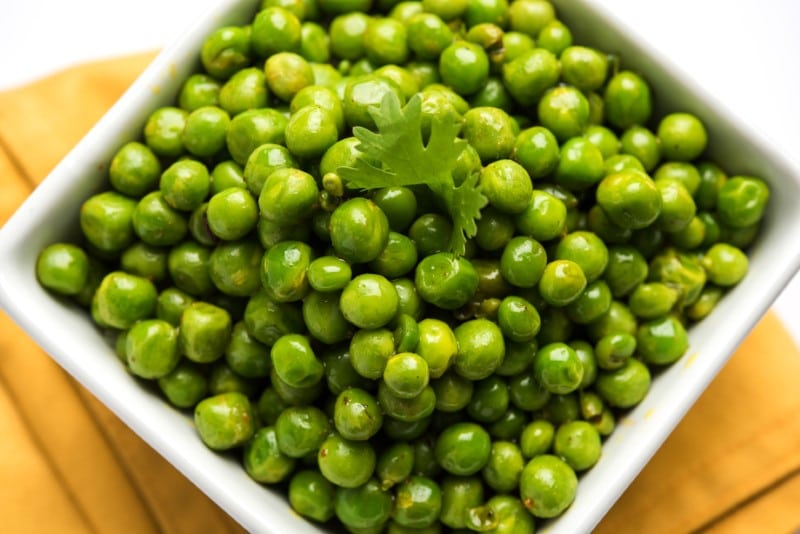
Lathyrus sativus, better known as the Indian pea, is a green pea that is indigenous to India. Grown in vibrant green pods, Indian peas flourish in cool, damp climes. Ideally, Indian peas are planted in the early spring months and harvested in late summer. Indian peas, which in the US are referred to as peas, are most commonly cultivated domestically in midwestern states such as North Dakota and Montana. Indian peas can be found year round in grocery store produce aisles. What’s more, these peas are commonly grown in home gardens too.
Indian peas are a legume that grows in pods with as many as 10 peas growing in each pod. Although the pods are edible, and deliciously enjoyed as a crudite offering, the small peas can be popped or sucked out and enjoyed raw or cooked. Peas are delicious in salads, sauteed with onions, mixed into vegetable blends, and even added to rice. Peas have both sweet and savory notes as well as earthy undertones making them a rather versatile vegetable. In Indian cuisine, these peas are popular in recipes such as Indian Spiced Peas, Aaloo Mattar, and Potato and Pea Curry. Best of all, Indian peas are highly nutritious, containing both dietary fiber and protein.
Italian Red Onion
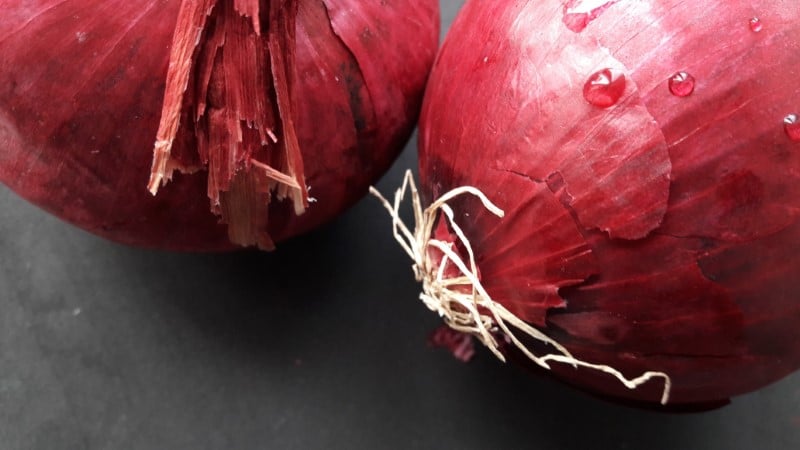
Originally discovered in Italy, the Italian red onion, or Allium cepa L. as it’s scientifically known, is known to be mild in taste and flatter in shape than the standard yellow onion. Though originating in Italy, the red onion, as it’s now known in the US, is cultivated globally in places with cool climates and upwards of 12 hours of daily direct sunlight. In the US, Italian red onions are commercially cultivated in states such as Washington, Idaho, Arizona, Colorado, and Georgia to name a few. As a result of their widespread commercial cultivation, Italian red onions are readily available throughout the year in grocery stores.
Red onions are similar in shape and size to yellow onions, however, they have a reddish-purple skin. Unlike yellow onions, Italian red onions have a mild flavor, verging on sweet. As such they are commonly enjoyed raw in salads, on sandwiches, and beyond. Furthermore, Italian red onions lend themselves well to sauteing. They’re commonly cooked into stuffings, vegetables, and grilling on kebabs. Moreover, pickled red onions and red onion jams and chutneys are delicious too. What’s more, Italian red onions add a nutritious kick to any recipe; they’re fraught with calcium, dietary fiber, protein, iron, and potassium.
Indian Fig Leaves
Opuntia ficus-indica, or Indian fig, is a cactus variety that flourishes in arid climates around the world. Also known as prickly pear, the Indian fig thrives in countries such as Mexico as well as Mediterranean regions, the Middle East, and Africa. Furthermore, the Indian fig also grows in dry parts of the US such as California and Arizona. As such, it can be procured in specialty shops throughout the country.
It’s worth noting that the Indian figitself is actually a sweet fruit, however, its tasty and nutrient-dense leaves are treated as a vegetable. Fig leaves are a vibrant green in color and each consists of three to five projections; the sides of the fig leaf are smooth and rounded. When harvesting Indian fig leaves, the darkest and brightest in color will be the tastiest. Speaking of taste, the flavor of Indian fig leaves gives off notes of vanilla and nuttiness. Though fig leaves can safely be eaten raw, they’re most commonly sauteed in oil and lightly seasoned, much like spinach often is; a preparation like this makes for a great accompaniment to savory dishes. Furthermore, Indian fig leaves are commonly used as wraps too. A wonderful source of vitamins A, B1, and B2 as well as calcium, manganese, and potassium, consider introducing Indian fig leaves into your diet.
The Final Letter
The list of vegetables beginning with I is certainly short and sweet. However, there are some truly delicious and nutritious vegetables beginning with I that you ought to give a try. Whether you’re working your way through the alphabet of vegetables or merely looking for new ways to incorporate vegetables in your diet, the I vegetables offer exciting new prospects. From legumes to root vegetables and the most popular American lettuce to fruit leaves, the I vegetables provide you with a new outlook on your dietary possibilities.

